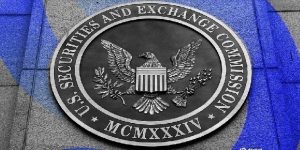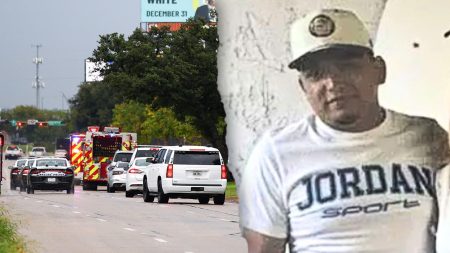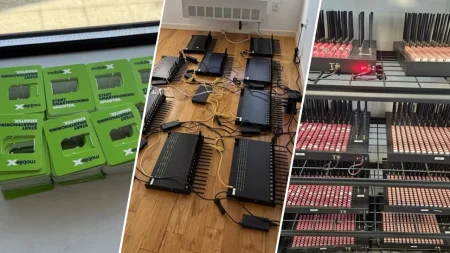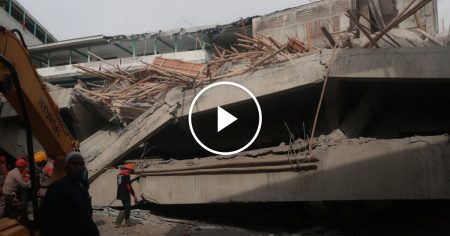From Discord to Destruction: Unraveling a Church Attack
In recent weeks, a shocking attack on a Church of Jesus Christ of Latter-day Saints meetinghouse has shaken a community and raised questions about religious intolerance. According to multiple sources who knew the accused attacker, his hostility toward the Mormon faith wasn’t a sudden development but rather a disturbing pattern that had manifested over years. These acquaintances described how the suspect frequently expressed negative views about the church, often sharing conspiracy theories and harsh criticisms that went well beyond typical religious disagreements. What makes this case particularly troubling is how these verbal expressions of animosity eventually escalated to alleged violence, following a trajectory that those who knew him now recognize as warning signs they wish they had taken more seriously.
The suspect’s social circle painted a complex picture of someone whose anti-Mormon rhetoric had become increasingly central to his identity. Former friends described uncomfortable gatherings where he would steer conversations toward his grievances against the church, regardless of the setting or audience. “It became impossible to have a normal conversation with him,” one former friend explained, requesting anonymity. “What started as occasional comments grew into full-blown rants. He’d find ways to bring up the church even when nobody was talking about religion.” Others noted that his criticisms extended beyond theological disagreements into personal attacks against church members themselves, suggesting a dangerous dehumanization process that experts identify as precursors to targeted violence. The escalation from verbal criticism to alleged physical attack follows a pattern that researchers of extremism have documented in various contexts of religiously motivated violence.
Digital footprints left by the suspect revealed an online persona increasingly dedicated to anti-Mormon content. Across various platforms and forums, he reportedly shared misinformation about church practices and leadership while engaging with like-minded individuals who reinforced his views. What began as participation in reasonable religious debates apparently transformed into involvement with more extreme online communities where mockery and hostility toward Mormons was normalized. One acquaintance who had connected with him through gaming platforms noted, “His username and profile pictures started changing to include anti-Mormon references. It became his whole online identity.” This digital radicalization mirrors patterns seen in other cases where online echo chambers amplify existing biases and gradually normalize extreme positions, creating virtual communities that validate increasingly radical viewpoints while insulating members from moderating perspectives.
The suspect’s progression toward alleged violence represents a troubling example of how unchecked religious prejudice can fester and potentially lead to dangerous outcomes. Mental health professionals who reviewed the case details (without directly examining the suspect) suggested this trajectory follows recognizable patterns of fixation and radicalization. Dr. Eleanor Whitman, a psychologist specializing in religious extremism but not involved in the case, explained, “When someone’s identity becomes heavily invested in opposition to a religious group, their thinking can become increasingly rigid and black-and-white. The targeted group transforms from people with different beliefs into perceived enemies or threats.” Family members, speaking on condition of anonymity, expressed regret about not recognizing the severity of the situation sooner, with one stating, “We thought he was just opinionated. We never imagined he would actually hurt anyone.”
Community members from both within and outside the Church of Jesus Christ of Latter-day Saints have responded to the attack with calls for greater religious tolerance and understanding. Local interfaith leaders organized vigils emphasizing solidarity across religious boundaries, while mental health advocates highlighted the importance of taking threatening rhetoric seriously, even when it hasn’t yet escalated to physical violence. “Words matter, and persistent verbal attacks against any religious group should be recognized as potential warning signs,” noted Rabbi David Goldstein, who heads a local interfaith council. Church leaders, while expressing shock at the attack, have emphasized forgiveness and healing rather than retaliation. “Our response must be to build bridges of understanding, not walls of division,” said one local church authority, reflecting the church’s official stance of extending compassion even in difficult circumstances.
As the legal process unfolds, the case raises profound questions about the line between protected speech and dangerous rhetoric, the role of online communities in either amplifying or moderating extreme views, and how communities can better identify potential threats before they materialize into violence. Security experts have urged religious organizations of all faiths to review their safety protocols while emphasizing that such incidents, though traumatic, remain statistically rare. Meanwhile, those who knew the suspect continue to grapple with complex emotions – guilt for not recognizing the danger, confusion about how someone they knew could take such actions, and sorrow for both the victims and the troubled individual they once called a friend. As one former colleague reflected, “This wasn’t just about religion. Something deeper was broken, and none of us knew how to fix it.” The community now faces the difficult task of healing divisions while ensuring such targeted religious violence doesn’t happen again.











